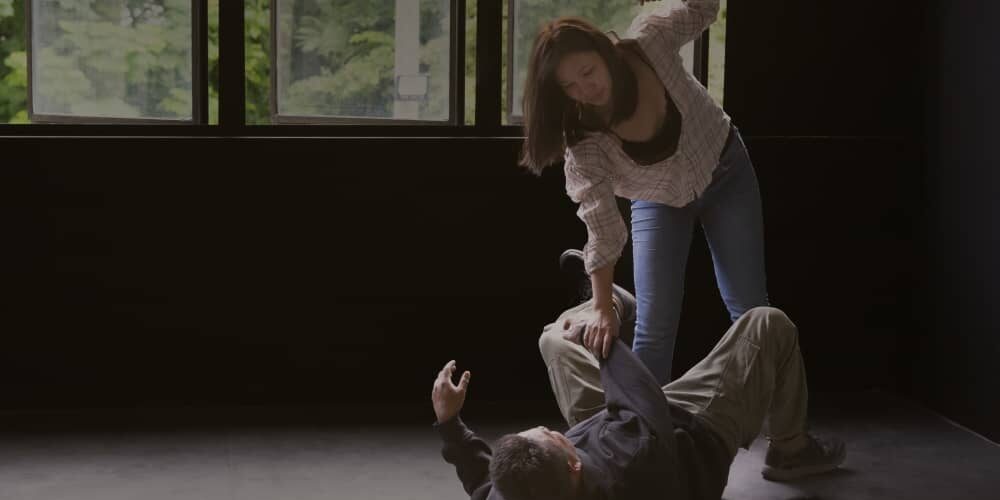Acting in self-defence is typically seen as a reasonable response to an unreasonable situation, and Western Australian law protects the rights of crime victims to attempt to ensure their safety.
According to a recent study from the University of Technology, Sydney, WA has the “Clearest and strongest legislation for homeowners who use force against an intruder.” And leeway exists for “disproportionate or excessive force to be used,” Still, how far is too far, and what does the Western Australian self-defence law say? To be clear, the ability to defend an intruder or trespasser against a movable property is separate and distinct from self-defence.
- Section 251 to 253 of the Criminal Code Act Compilation Act 1913 provides the lawful defence for defending against a trespasser or intruder.
- Section 248 of the Criminal Code Act Compilation Act 1913 provides the lawful defence for self-defence.
They are as follows:
251. Movable property, use of force to resist taking of by trespasser etc.
It is lawful for any person who is in peaceable possession of any movable property, and for any person acting by his authority, to use such force as is reasonably necessary in order to resist the taking of such property by a trespasser, or in order to retake it from a trespasser, provided that the force used is not intended, and is not such as is likely, to cause death or grievous bodily harm to the trespasser.
252. Movable property possessed with claim of right, use of force to defend possession of
When a person is in peaceable possession of any movable property under a claim of right, it is lawful for him, and for any person acting by his authority, to use such force as is reasonably necessary in order to defend his possession of the property, even against a person who is entitled by law to possession of the property, provided that he does not do bodily harm to such other person.
253. Movable property possessed without claim of right etc., use of force to take
When a person who is entitled by law to the possession of movable property attempts to take it from a person who has the property, but who neither claims right to it nor acts by the authority of a person who claims right, and the person in possession resists him, it is lawful for the person so entitled to possession to use such force as is reasonably necessary in order to obtain possession of the property; provided that the force used is not intended, and is not such as is likely, to cause death or grievous bodily harm to the person in possession.
What is Self-Defence in Western Australia?
To understand the laws surrounding it, defining self-defence is necessary.
According to section248 of the Criminal Code Act Compilation Act 1913, a harmful act against another person is self-defence if:
- If the harmful act is in response to another harmful act directed at the person raising the defence or in defence of another person, which includes non-imminent acts.
- The accused believes their actions to be a reasonable response based on the circumstances at that time.
- Reasonable grounds exist for those beliefs.
What is a Harmful Act?
Part V of the Criminal Code Act states that a harmful act must form an element of an offence. These acts are, by nature, violent offences such as assault or homicide.
Who Has the Burden of Proof in a Self-Defence Trial?
In a criminal trial, the accused does not need to prove their case. It is on the prosecution to prove beyond reasonable doubt that an assault charge occurred. However, in trials where self-defence is considered, the accused must, on the balance of probabilities, prove that the accused is acting in self-defence. Once the accused claim self-defence, the prosecution disprove, or negate, the self-defence claim beyond a reasonable doubt.
What are the Types of Self-Defence?
Western Australian Law notes several types of self-defence. These are:
- Excessive Self-Defence – The Criminal Code refers to excessive self-defence as a partial defence against a murder charge. The term excessive is applied because, in the situation, the accused was correct to defend themselves but responded unreasonably or disproportionately. For example, if the accused is punched in the face, a reasonable self-defence response would be to punch the assailant. In the same situation, stabbing or shooting the assailant would be excessive self-defence. If a case is successfully defended this way, it usually will reduce the charge from murder to manslaughter.
- Defence of Another – As stated, this form of self-defence involves protecting another person. At one time, the defence of another applied to a protective relationship, such as a husband defending his wife or a parent defending their child. However, it is commonly accepted to include any person defending someone else.
- Defence of Property – Western Australia makes allowances for a person who is in peaceable possession of property to use force to defend the property. However, the property owner should take care not to cause severe injury or death during defence. The only acceptable reason for a property owner to use grievous force is if the property owner had a reasonable belief that they would suffer severe injury or death. Ultimately, the court must assess if there was a reason to believe the accused could face serious harm.
What is Reasonable Self-Defence?
Pinning down a single definition of reasonable self-defence is no small task. Self-defence has both subjective and objective tests that must be considered in determining an accused’s prospects of acquittal. It involves understanding the thoughts and actions of a person under extreme duress. Circumstances surrounding the need for self-defence are typically emotionally charged and, more often than not, include intense fear for the well-being of oneself, others or both. In many cases, an accused will report acting automatically to a threat instead of acting with malice.
In self-defence cases, the accused must account for their actions. They must persuade the magistrate or the panel of jury members that their actions are proportionate to the danger they perceive. Further, there is also another external element where the magistrate or the panel of jury members must consider independently, in determining whether the act of assault is justified. That is, whether or not the accused’s actions are subjectively a reasonable response at the time.
Being intoxicated at the time of the alleged offence does not change the threshold for proving self-defence. An accused who believes that they are acting in self-defence does not necessarily mean that they will be acquitted if they are charged.
If the accused claims that the victim is, in fact, the aggressor and that the victim has a prior history of assaulting the accused, then why is the accused in the position he or she is in? Why didn’t the accused move away from the conflict at first instance? Why are the accused and the victim still communicating after the accused was victimized? These are issues that must be considered when determining the accused’s prospects of acquittal.
The defence of self-defence must be considered on a case-by-case basis. For example, one person may sense they are in mortal danger and act accordingly. However, another person in the same situation may react differently based on the believed degree of danger.
What are the Permissible Situations for Reasonable Self-Defence?
The Australian Attorney-General’s Office explains that conduct can be excused as self-defence only if it is a reasonable response to a perceived threat. This includes but is not limited to the following:
- Defending themselves or another person from unlawful acts
- Attempting to prevent or end unlawful imprisonment of themselves or another person
- Protecting property from damage
- Preventing criminal trespassing on property
- Removing a person who is on the property illegally
However, the claim of self-defence does not apply if the person uses deadly or potentially deadly force to:
- Prevent criminal trespass
- Protect property
- Remove someone who is committing criminal trespassing
Likewise, self-defence is not applicable if the person knows the actions of another are lawful. For example, if animal control agents arrive to remove stray dogs from your property, you cannot attack the agents because you are fond of the dogs.
Where is the Self-Defence Law Applicable?
All Australian states and territories have statutes regarding the use of self-defence as a way to eliminate perceived threats.
When is an Action Not Self-Defence?
To be considered self-defence, an act must be in response to impending harm as perceived by the victim.
- Using force against verbal threats is not self-defence. Please consider your available options.
- Use of force against someone behaving lawfully.
- Continuing the use of force once the initial attack is stopped.
- Causing excessive injuries, or death, unless there is reason to believe that there is a perceived threat.
It is necessary to remember that when using self-defence as a way to excuse your actions, all factors involved come into play to decide your guilt or innocence. If you are being charged with a crime that you believe is self-defence, feel free to contact the legal experts at WN Legal. Our team will take care of all the details and make sure you have a fair trial.
**Please Note**
The material presented in this post is for informational use only. It does not constitute binding legal advice and should not be a replacement for a consultation with a legal professional








